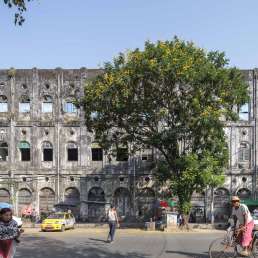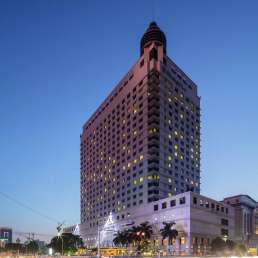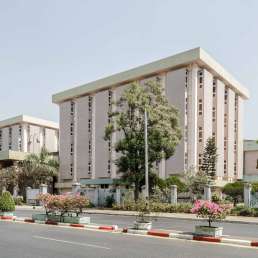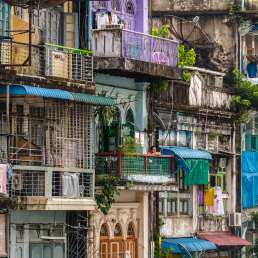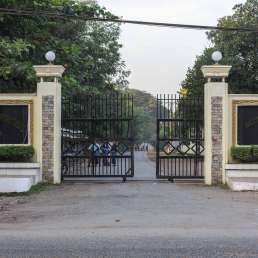Formerly: Thamada Hotel and Cinema
Address: 5 Alan Pya Pagoda Road
Year built: 1956-1964
Architect: Unknown
The Thamada Hotel and Cinema is one of the city’s best examples of modern post-war architecture. The four-storey cinema features rounded corners and, unusually for its time, an oval cinema hall. The hotel is directly to the north, set back slightly from the street to allow for driveway access and parking. Its seven storeys repeat the cinema’s rounded features on the corner of Yaw Min Gyi Street. The downstairs Café 365 features floor-to-ceiling windows, as does the first-floor hall which was being renovated at the time of writing.
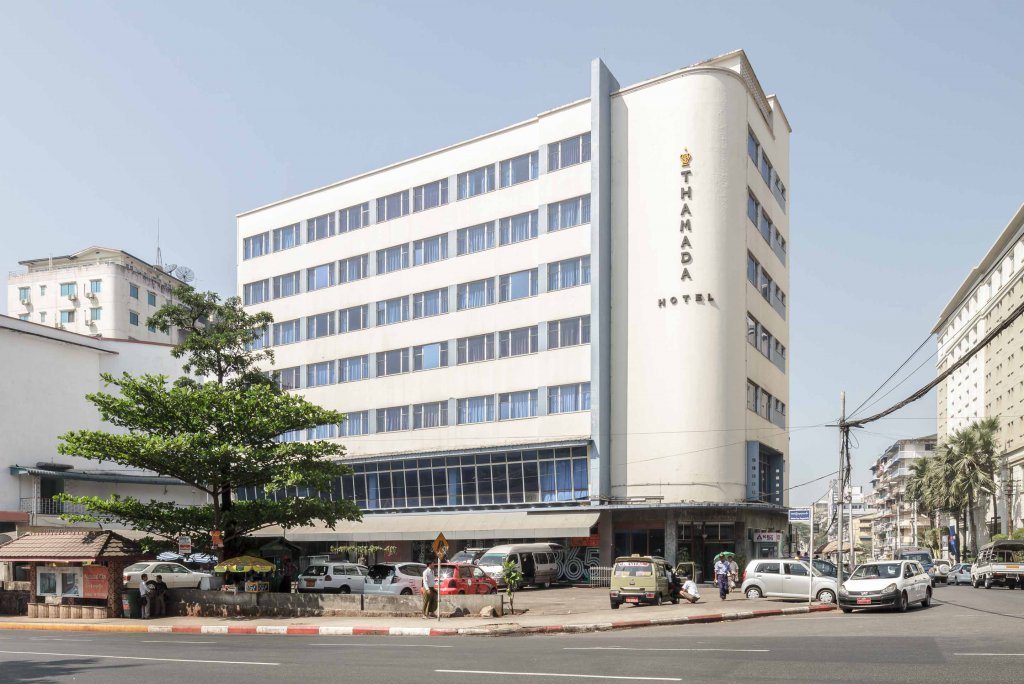
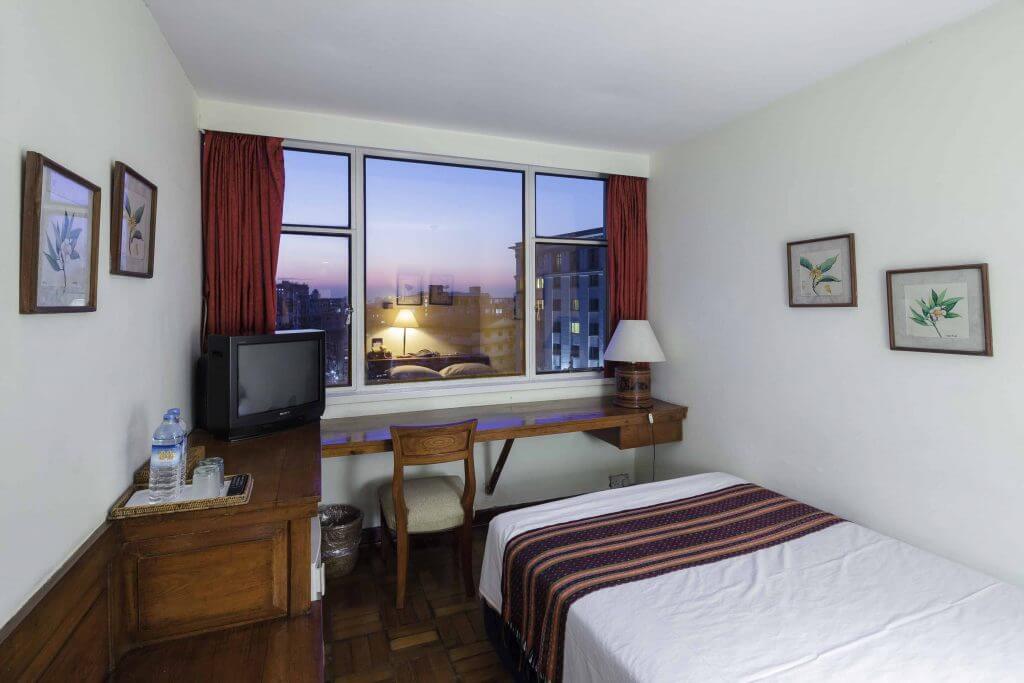
The Thamada was built by ethnic Chinese businessman U Kyauk Sein. He built the cinema first, to subsidise the construction of the adjacent hotel. When the cinema opened its doors in 1958, it immediately set the standard for viewing and seating comfort in this movie-mad city. Most of Rangoon’s cinemas, on “Cinema Row”, were just a ten-minute walk away. This is where today’s Sule Shangri-La and the Sakura Tower stand and where some cinemas, such as the Waziya, still remain. The Thamada boasted a fully air-conditioned hall. Its most expensive and plushest seats were at the front of the balcony. The cinema is still in operation today and draws sell-out crowds, especially at weekends. It was renovated and upgraded only a few years ago. It is operated by the Mingalar Cinema Group, Myanmar’s largest movie screen company.
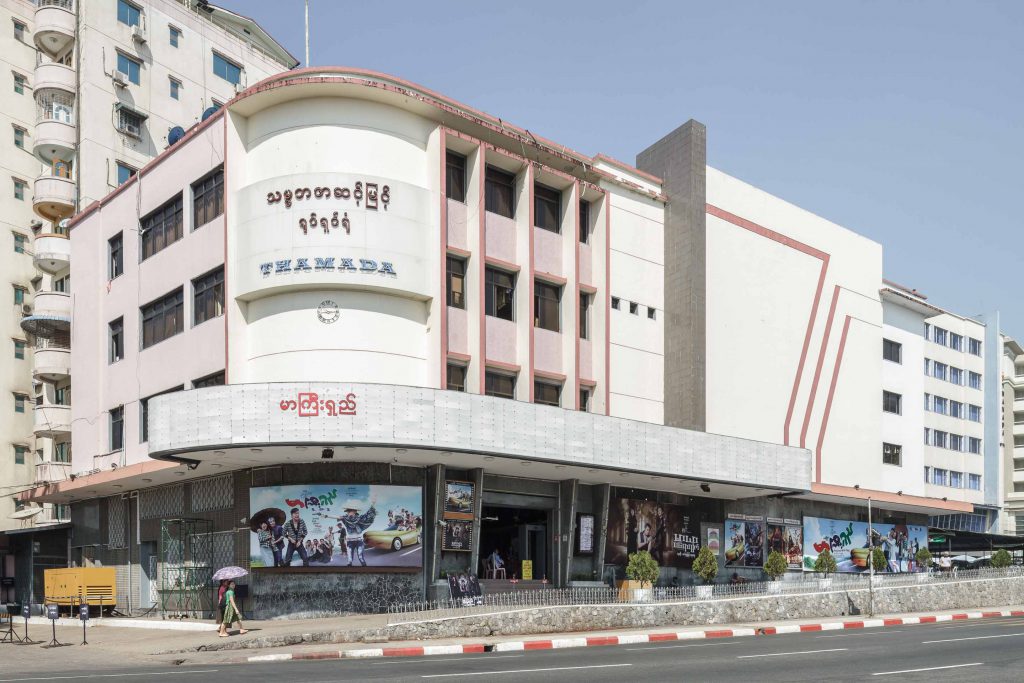
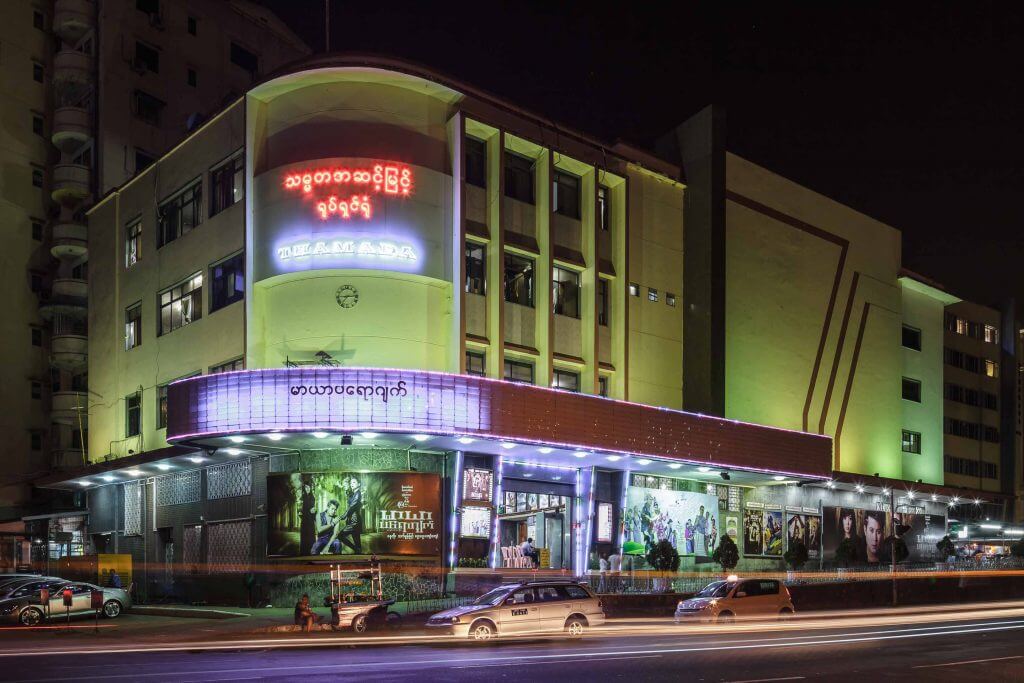
The next-door Thamada Hotel was not yet completed when the government nationalised the whole complex in 1962, and only opened in 1964. It then came under the management of the inimitably named “Trade Corporation No. 20 – Hotels & Tourism Trade Corporation” under the Ministry of Trade, which mainly catered to foreign tourists. Not much is known about the complex’s foreign architects. What we do know, however, is that a Japanese craftsman involved in the technical drawings inspired a young U Sun Oo (who designed the Martyrs’ Mausoleum) to become an architect.
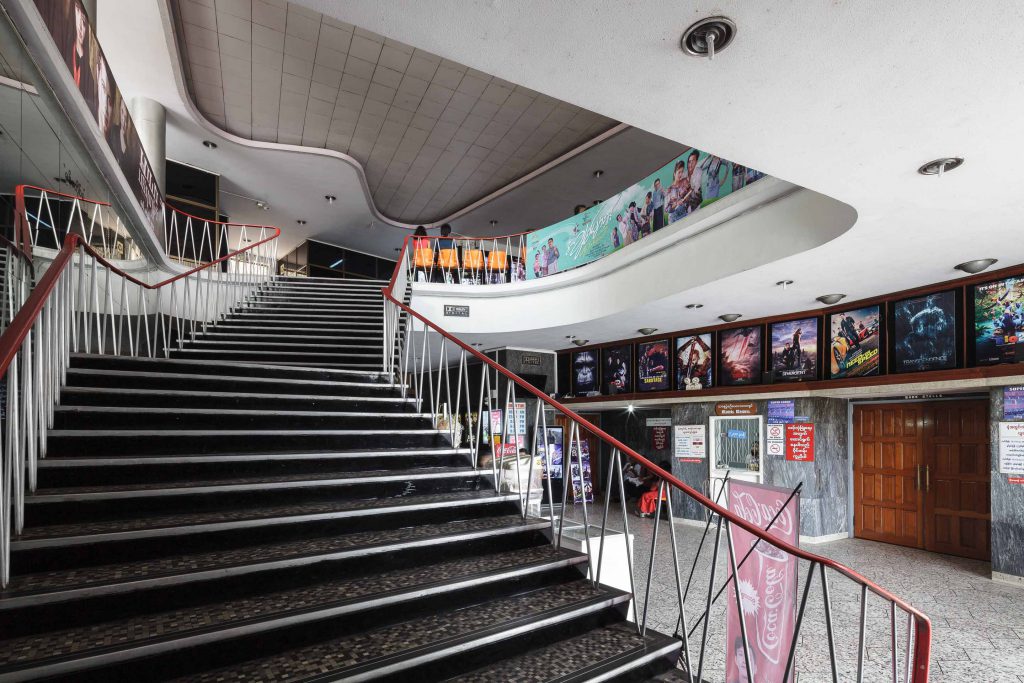
After the SLORC assumed power in 1988, the Thamada became the unlikely choice for a renovation by one of the world’s most exclusive hoteliers. Adrian Zecha, founder of the fabled Aman Resorts (a collection of five-star properties in plush, palm-lined locations) had his eyes set on the Strand Hotel. But in exchange for the privilege of renovating and operating the colonial-era gem, Zecha was required to upgrade the Inya Lake Hotel and the Thamada too. The SLORC wanted to improve tourist accommodation in preparation for an influx of foreign visitors—one that would, in reality, take many more oppressive and sanction-filled years to materialise. Zecha was not too impressed with the two extra properties that were forced upon him. He described the Inya Lake Hotel as a “Russian bunker”, whereas the “tatty” Thamada could only become, at best, a two-star venue in his eyes. And in fact, that’s exactly what it is today. This is assuredly not a luxury hotel and yet it has its charm. The curious traveller may enjoy taking a closer look.
